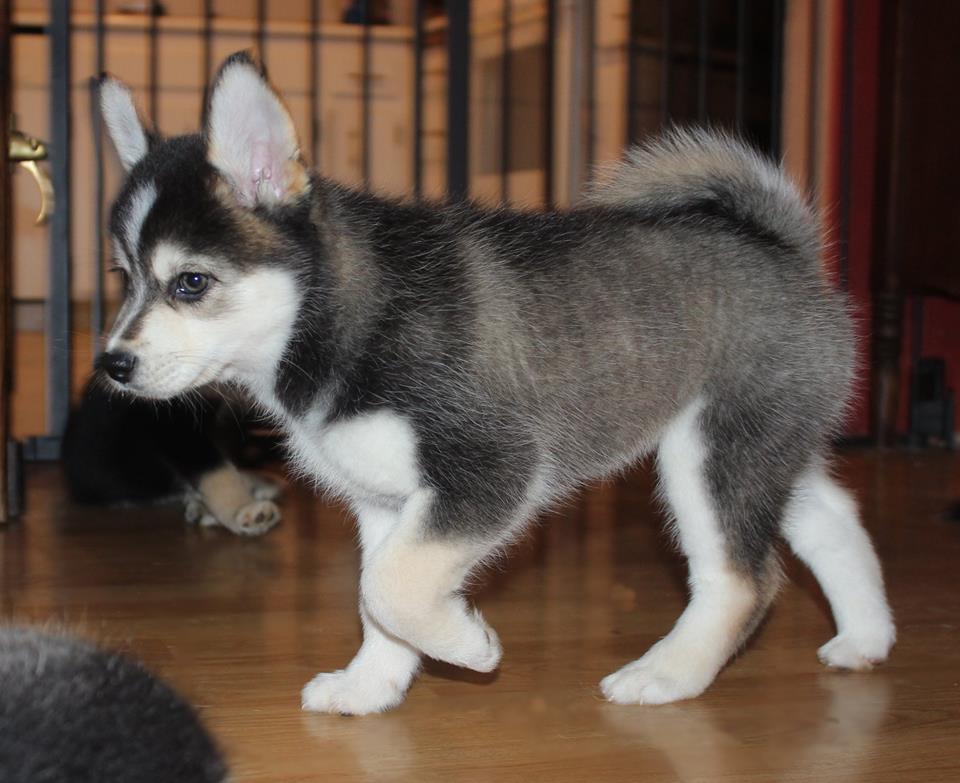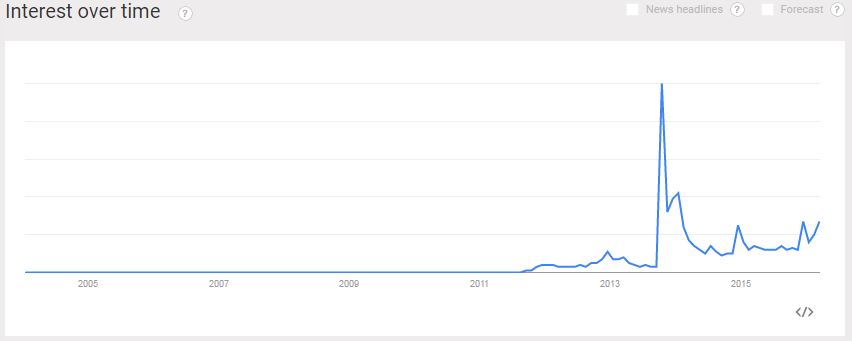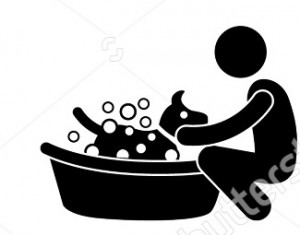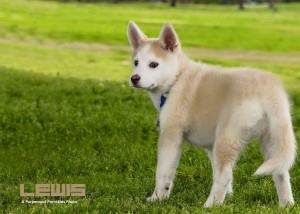What is a Pomsky?
A pomsky is a cross breed between a Siberian husky and a Pomeranian, often called a “Pomeranian Husky mix”. The pomsky resembles a smaller husky and is quickly becoming one of the most popular breeds in the United States.
Are pomskies a new thing?
Pomskies are a very new and exciting breed; in fact, the first generation of pomskies is still alive today.
Pomskies were first bred in the early 2010’s and quickly became an overnight sensation in 2013, having since become one of the most popular breeds in the United States
How is a pomsky bred?
All pomskies are bred from a female Siberian husky and a male Pomeranian using artificial insemination.
What are the different types of pomskies?
There are three variations of the Pomeranian husky mix:
- 50/50
- 25/75
- 75/25
The most common pomsky is a 50/50 – this is a pomsky bred from a pure Pomeranian and a pure Siberian husky, meaning it is 50% husky and 50% Pomeranian. This is the type of pomsky you see in most pomsky photos, it has distinguished husky features with the small stature of a Pomeranian.
A 25/75 is a pomsky bred from a 50/50 pomsky and pure Pomeranian, meaning it is 25% husky and 75% Pomeranian. This variation of the pomsky is smaller than the 50/50, with more distinguished Pomeranian features.
A 75/25 is a pomsky bred from a 50/50 pomsky and a pure Siberian husky, meaning it is 25% Pomeranian and 75% husky. This variation of the pomsky is only slightly smaller than the average female husky and will act and look like a husky. This is the least common breed of pomsky, it is usually only bred so the breeder can get this type of dam or sire for a future litter mix.
How big is a full grown pomsky?
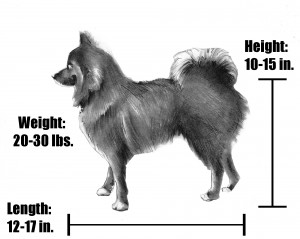
A full grown adult pomsky is approximately 12 to 17 inches long, 10 to 15 inches tall (from floor to shoulder blade) and weighs about 20 to 30 pounds
The size of a full grown pomsky depends heavily on the parent and the type of cross breed. The breeder will not be able to guarantee size, but they will be able to provide you with an estimated height and weight based on the dam and sire of the litter.
On average, a full grown 50/50 pomsky ranges between:
- 10 to 15 inches tall
- 12 to 17 inches long
- 20 to 30 pounds in weight
This size of a pomsky varies drastically depending on the parents of the litter and could range anywhere from 8 to 35 pounds, especially for a 25/75, which will be closer to a pure Pomeranians size. Consult your breeder if you are looking for a certain sized pomsky, they will be able to provide you a rough estimate of a litter’s size based on the parents and can provide you with an estimated size based on the pomskies growth within the first couple weeks after being born.
How fast do pomskies grow?
A pomsky typically reaches its full grown size within a year. By six months the pomsky is more than half way done growing; by a year you can expect your pomsky to be just about fully grown.
At what age are pomskies sold from the breeder?
This depends on the breeder, but in most cases pomskies are offered for sale around 4 or 5 weeks old.
How much are pomsky puppies?
The price of a pomsky ranges between $1,500 to $4,000, based on the quality of the puppy and breeder. Certain markings and eye color can increase the price closer to $4,000.
Anything much higher than $4,000 or much lower than $1,500 is likely a scam, so beware!
What is a pomskies attitude?
Pomsky attitudes vary depending on the puppy. The attitude could lean towards that of a husky or that of a Pomeranian. Although each pomsky’s attitude is unique, here’s some common characteristics found in most pomskies:
- Smart
- Playful and energetic (but not overly hyper)
- Active (but can be worn out with a little running around the yard)
- Friendly
- Comforting
- Love to cuddle
- Easy to train
- Loves everyone (both humans and other dogs)
- Great with kids
Characteristics of a pomsky
Here are some of the most common characteristics of the pomsky:
- Curved bushy tail
- Soft, fluffy and silky coat
- Athletic
- High jumpers
- Fast runners
- Good climbers
- “Escape artists”
- Loyal
- Obedient (if you train them young!)
Do pomskies have health problems?
To date, no. As mentioned the pomsky is a relatively new breed, we are still within the first generation of pomskies to ever live and have not seen any health problems yet. A reputable breeder will offer a health guarantee and will monitor the health of their litter, dam and sire.
What is the life expectancy of a pomsky?
As mentioned, pomskies are a new breed so there is no average length of life for pomskies yet. We expect pomskies to live anywhere between 14 to 20 years old.
What is the most difficult part of owning a pomsky?
Three difficult aspects of owning a pomsky:
- Attention
- Exercise
- Grooming
Attention
The most difficult part of owning a pomsky is keeping them entertained. Pomskies are very playful and energetic (similar to a husky); they need to keep busy otherwise they’re prone to chew and dig.
Like most dogs, if you don’t show your pomsky some love and attention, they will get bored and get into trouble! If you don’t have enough time to run around the yard with your pomsky, consider getting them a brother or sister to play with!
Exercise
Pomskies require daily exercise to avoid boredom. These little pups are very smart and very active, if not stimulated they’ll resort to chewing and terrorizing your house!
You must dedicate some time to play with your pomsky; they’re energetic and playful but can be worn down.
Grooming
Yes, pomskies shed. You should brush your pomsky frequently to control the shedding of dead hair.
What is the most difficult part of training a pomsky?
Pomskies are a very smart breed. They learn new tricks and obey commands quickly but if you don’t put in the time to house train you pomsky it can become a nightmare to teach commands.
Pomskies respond best to consistent and firm training along with positive reinforcement. Be sure to start training while your pomsky is young, the training only gets more difficult as they age.
Do pomskies shed?
Pomskies shed their dead hairs and also blow their coat about twice a year. This means the pomsky sheds their entire coat all at once (usually within a month), twice a year.
Pomskies should be brushed frequently to help control the shedding of dead hair. Talk to your breeder if you’re concerned about the amount of shedding of your pomsky.
Here’s some tips to reduce your pomskies shedding.
What do pomskies eat?
Any quality brand of small to medium sized dog food, preferably one that’s not full of fillers will be just fine for a pomsky.
What are the best pomsky toys?
Chew toys and puzzles.
- A bored pomsky is prone to chewing, load up on lots of chew toys to keep your puppy entertained (especially when their teething).
- Pomskies are a very smart dog breed; buy them some dog puzzles to keep them entertained. They love figuring out how to get treats out of puzzles.
Do you recommend any pomsky products?
Harness
Pomskies are best on a harness, rather than a collar. Buy your pomsky a harness to use when taking them for a walk.
Kennel
Kennels are recommended for any dog breed. Kennels are useful before your pomsky is fully house trained and potty trained, this way your pomsky won’t chew up the house when you turn your back!
Small dog treats
Pomskies only need small dog treats; you don’t want to fill them up on just treats!
What should I know before buying a pomsky?
Three things to know before buying a pomsky:
- Pomskies get bored and lonely easily – they love humans and they love to play but you’ll need to dedicate some time to give them attention.
- Pomskies are very smart – they pick up new commands quickly and easily, but if you don’t dedicate time to them they might just out smart you!
- Pomskies respond well to incentive based training – be firm with your pomsky and provide positive reinforcement.
Pomsky scams
Two types of scams exist:
- The breeder sells a dog but it’s not a pomsky
- The breeder advertises a pomsky for sale but never actually sends you the dog once payment is made
One rule of thumb, if it’s too good to be true, then it’s probably a scam.
Common characteristics of a scam:
Price
- Price is lower than $1,000
- Price is higher than $4,000
- No deposit required
- Breeder is more concerned with money than they are with educating you about pomskies
Health
- Refuses to provide DNA tests of their litter
- Does not offer a health guarantee
- Refuse to provide health information about sire and dam
- Refuses to provide veterinary references
Red Flags
- Limited photos
- No videos
- No web page or Facebook
- Sketchy looking web page or Facebook
- No information about the dam and sire (mother and father)
- Refuses to provide photos of sire and dam
- No waiting list – most breeders have a waiting list
- If you’re on the waiting list but they don’t tell you which spot on the waiting list you are
Other
- No screening process – a good breeder will screen the buyer to ensure they are a suitable candidate for a dog
- Auction websites – do not use auction websites
- Breeder makes guarantee about temperament, weight or coat. Pomskies are a new breed, the breeder can make estimates about how your dog will look and act, but should not make any guarantees.
Four steps to weed out scams:
- Communicate – talk to the breeder, preferably by phone, and ask them lots of questions about the pomsky breed. Breeders have the most knowledge about the pomsky breed; they should be able to answer any question you have.
- Google reviews – look the breeder up online, if you can’t find their web page or Facebook then proceed with caution.
- Ask for photos and videos– scammers usually only have a couple photos and rarely have any videos. On a couple occasions, ask for new photos and videos of both your puppy, the dam and the sire. A good breeder will be able to provide an unlimited number of photos and videos.
- Ask for a DNA tests and health guarantee – reputable breeders will DNA test their litter, provide health screenings of the dam and sire and provide a health guarantee for your pup.
How to find a pomsky breeder?
We highly recommend using only approved pomsky breeders or breeders that have been recommended by someone that owns a pomsky.
Special thanks
Special thanks to Paramount Pomskies for their contributions to the information in this blog post. Paramount is a pomsky breeder and is an excellent source for reliable information about the pomsky dog breed.
More Pomsky Resources
Need more help finding a Pomsky? Check out our other Pomsky articles and videos including:
- Free Download - Litter Updates and Reputable Breeders
- Article - How To Find a Pomsky Breeder
- Article - How To Avoid Pomsky Scams
- Article - Size of Adult Pomsky
- Article - The Cost of a Pomsky
- Article - Pomeranian Husky Mixes
Want updates every time a one of our top breeders has Pomskies available? Click here to join our litter alert email list (also download a list of all reputable breeders.

